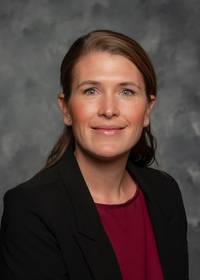319 Watershed Success Story: Owl Creek Watershed Project
What Is a 319 Watershed Project?
Originating from the 1987 amendments to the U.S. Environmental Protection Agency (EPA) Clean Water Act (CWA), Section 319 established the Nonpoint Source Management Program. Section 319 provides federal funding to help focus state and local nonpoint source pollution mitigation efforts. In Mississippi, the Mississippi Department of Environmental Quality (MDEQ) is the lead agency for the development and implementation of the 319 program, which is dedicated to protecting and restoring the state’s water resources. The program provides financial assistance to other state agencies, local governments, universities, and nonprofit organizations to implement nonpoint source pollution projects.
Project Overview
Owl Creek watershed is located in Tippah County in northeast Mississippi, covering 25,740 acres. The watershed includes various land use types, including agricultural lands, pasturelands, and forested areas. Owl Creek watershed was a candidate for restoration due to identified impairments from nonpoint source sediment pollution.
On agricultural land in the watershed, soil erosion was identified as a major resource concern for landowners and operators.
With high interest from stakeholders and its history of being listed on the state’s 303(d) list as an impaired and threatened water body, Owl Creek-Little Hatchie River watershed was selected as a priority watershed by the MDEQ basin team.
With coordination from Tippah County Soil and Water Conservation District and United States Department of Agriculture (USDA) Natural Resources Conservation Service (NRCS) staff, 28 landowners implemented 282 best management practices (BMPs) to improve agricultural land and reduce erosion to improve water quality in Owl Creek.
Project Goals
- Improve water quality and protect high-quality waters by implementing BMPs within the targeted watershed area.
- Apply BMPs to agricultural lands in the project area, to reach the desired outcome of reduced nutrient and sediment runoff and livestock access to streams.
- Reduce pollutant loading from agricultural nonpoint sources.
- Inform and educate the public about BMPs that benefit water quality.
Resource Concerns


Owl Creek has a designated use of fish and wildlife support. After biological impairment was identified in 2010, sediment was identified as the most probable nonpoint source pollutant of concern in Owl Creek, resulting from runoff into receiving waters by several in-channel processes (mass wasting, head cutting, gullying, and sheet and rill erosion). While sources of sediments can include a variety of land-use activities, agricultural practices were identified as a pollutant source where low-cost BMPs could mitigate nonpoint source sediment pollution. Local agencies worked with producers to determine which BMPs were feasible to implement into operations without impacting productivity.
The images below demonstrate sediment resource concerns in agricultural landscapes before implementing BMPs, while the after images (taken about 8 months later) highlight conservation implementation and mitigation of sediment transport.
Before



After



Impacts
Through the Owl Creek Watershed Project, the local Soil and Water Conservation District and NRCS assisted with the design and implementation of 282 conservation practices, working with 28 different landowners. Models predict that these practices will reduce nonpoint sources of pollution by 4,137 tons (8.27 million pounds) of sediment, 9.45 tons (18,904 pounds) of nitrogen, and 3.15 tons (6,303 pounds) of phosphorus in the watershed.
*Load reductions were calculated using EPA’s Region 5 Load Reduction Model and include practices implemented from 2019 to 2024.
Stakeholder involvement and voluntary conservation adoption is a key component to the success of watershed projects.

Project partners used cost-effective materials and conservation practices to ensure more practices were implemented to assist more landowners and mitigate erosion throughout the watershed.

Partnerships
Watershed projects are uniquely collaborative and strategic approaches to coordinating resources and addressing watershed concerns. The open dialogue with landowners and producers throughout the process helps to identify conservation practices that provide a win-win scenario for the landowners and the environment overall.
Partners include:
- Mississippi Department of Environmental Quality
- United States Environmental Protection Agency
- Mississippi Soil and Water Conservation Commission
- Tippah County Soil and Water Conservation District
- USDA Natural Resources Conservation Service
Want to Learn More?
- Identify if a waterway is on the 303(d) list of impaired water bodies.
- Contact your local MDEQ Basin Coordinator.
- Visit EPA to learn how watershed plans are developed.
- Explore water quality projects led by the Mississippi Soil and Water Conservation Commission.
This material is based upon work supported by the U.S. EPA, under sponsor award agreement number 00D87719.
Publication 4022 (POD-09-24)
By Edward D. Entsminger, PhD, Extension Associate III, and Beth Baker, PhD, Associate Extension Professor, Wildlife, Fisheries, and Aquaculture.
The Mississippi State University Extension Service is working to ensure all web content is accessible to all users. If you need assistance accessing any of our content, please email the webteam or call 662-325-2262.






